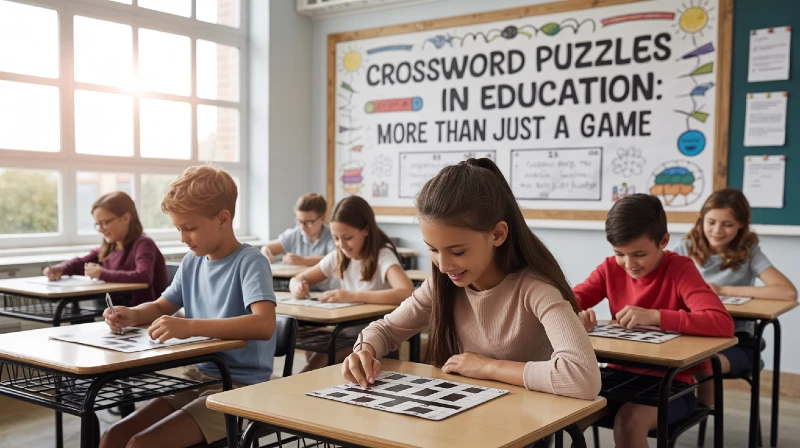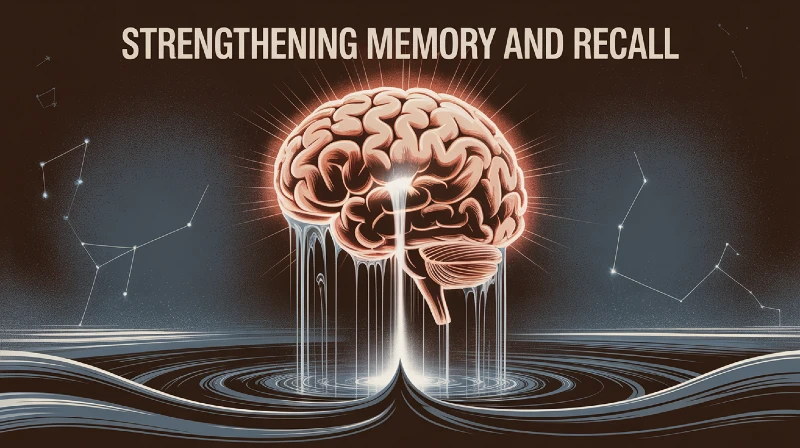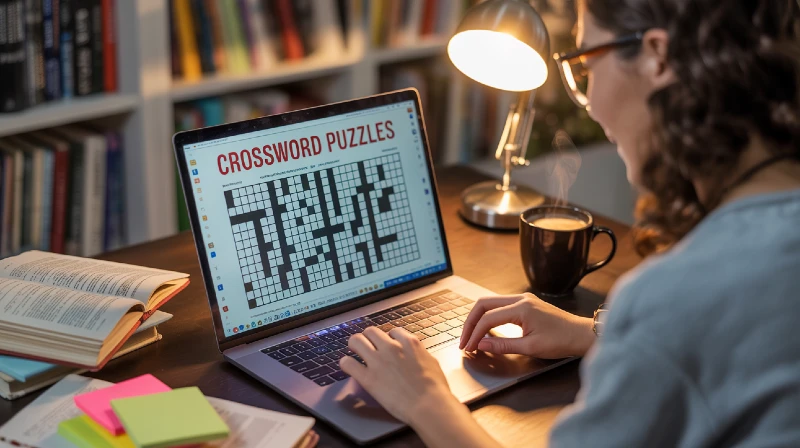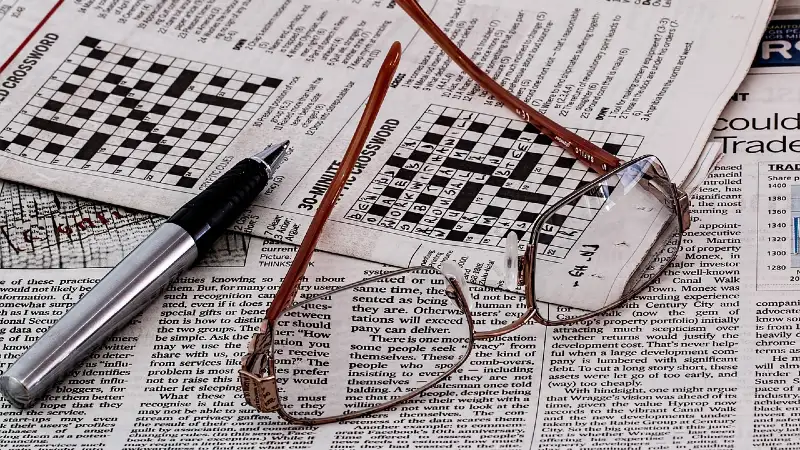Crossword Puzzles in Education: More Than Just a Game
Crossword puzzles have earned their place as a beloved pastime — but their real power lies in the classroom. Far from being just a fun diversion, these word-based challenges serve as valuable educational tools that enhance vocabulary, reinforce subject knowledge, and promote critical thinking across all age groups.
From elementary classrooms to adult learning environments, educators are increasingly turning to crossword puzzles as a means of active learning. Their flexible format makes them ideal for teaching language arts, science, history, and even complex subjects like medical terminology or second-language acquisition.
In this article, we’ll explore the educational benefits of crossword puzzles, review how they’re used across different levels of education, and share real-world examples of how they’ve been integrated successfully into modern curricula.
The Role of Crossword Puzzles in Learning
Crossword puzzles aren’t just recreational brain teasers — they are versatile educational tools that support a wide range of learning outcomes. By combining play with problem-solving, crosswords make learning more interactive, memorable, and enjoyable for students of all ages.

🧠 Cognitive Benefits of Crossword Puzzles
Crossword puzzles activate key cognitive skills by requiring learners to:
Recall facts
Make associations
Apply logic and inference
This mental exercise boosts cognitive flexibility, sharpens attention, and fosters executive functioning — the mental processes responsible for planning, organizing, and strategizing. Studies suggest that regular engagement with puzzles may even support long-term brain health and delay cognitive decline in adults.
📚 Vocabulary Development and Language Skills
One of the clearest educational benefits of crossword puzzles is vocabulary enhancement. As students work through clues:
They encounter new words in context
Reinforce the spelling and meaning of familiar terms
Improve word retrieval and semantic association
This makes crossword puzzles a powerful supplement to language arts lessons, ESL programs, and literacy development at all levels.
💡 Did You Know? Research published in The Journal of Educational Psychology shows that interactive vocabulary activities, like crossword puzzles, improve both retention and application of new words.
🧠 Strengthening Memory and Recall
Crossword puzzles require players to retrieve information from memory, apply it in real time, and reinforce it through repetition — a key technique known as retrieval practice.
This helps:
Strengthen neural pathways
Improve long-term retention of facts
Enhance working memory — especially important for academic success in reading comprehension, math, and science.

✏️ Crossword Puzzles in Elementary Education
In elementary classrooms, crossword puzzles are often integrated into lessons as a fun way to:
Reinforce spelling and phonics
Review science or social studies topics
Strengthen reading comprehension
Example:
A puzzle on animals might include clues like:
“This striped animal lives in the savannah” → Zebra
“This mammal lays eggs” → Platypus
Teachers can customize crosswords to align with curriculum objectives, turning passive review into active learning.
Crossword Puzzles in Education: Applications Across All Levels
Crossword puzzles are more than a supplementary activity — they are adaptive, subject-specific tools that support learning at every stage of education. From middle school classrooms to adult ESL programs, crossword puzzles promote engagement, comprehension, and long-term retention.
🏫 Middle and High School Applications
At the middle and high school level, crossword puzzles take on a more complex and academic focus. Educators use them to:
Reinforce subject-specific vocabulary
Encourage critical thinking and concept review
Provide a non-traditional study tool
Examples:
A science teacher may create a crossword based on the periodic table, cellular structures, or Newton’s laws.
A literature teacher may design puzzles covering themes, author names, or literary devices from assigned readings.
This method supports active recall and adds a layer of interactivity to traditionally lecture-heavy subjects.
🎓 Crossword Puzzles in Higher Education
In college and university settings, crossword puzzles are used to:
Promote synthesis of lecture material
Foster deep learning through application
Provide a break from passive reading and note-taking
Professors may incorporate puzzles that require students to draw from multiple sources — such as combining lecture notes with textbook readings — encouraging comprehensive understanding.
🧠 Example: In a psychology course, a crossword might connect terms like “cognitive bias,” “neurotransmitter,” and “schema,” reinforcing key theories and terminology.
👩🏫 Crossword Puzzles in Adult Education
Adult education programs often use crosswords to support:
Literacy and language development
Test preparation (e.g., GED, certification exams)
Cognitive engagement for older learners
The format provides low-pressure repetition of material, particularly useful for adults learning English or brushing up on academic concepts after years outside the classroom.
🌍 Crossword Puzzles in Language Learning
In both traditional and ESL (English as a Second Language) classes, crosswords are widely used to:
Teach and reinforce new vocabulary
Strengthen grammar and syntax
Improve reading comprehension
By offering clues in the target language, puzzles help create contextual, immersive learning experiences. Teachers can adapt puzzle complexity to fit beginner, intermediate, or advanced levels.
🔬 Integration into STEM Education
STEM subjects benefit from crossword puzzles by:
Reinforcing technical terminology
Clarifying abstract concepts
Reviewing key formulas and principles
Examples:
A math puzzle may include clues for terms like “isosceles” or “coefficient.”
A technology puzzle may reinforce programming languages, acronyms, or tech history.
Used alongside traditional problem sets, crosswords support conceptual clarity and retention.
📚 Crossword Puzzles for History and Social Studies
In humanities courses, crossword puzzles:
Help students remember dates, events, and figures
Encourage geographic and political recall
Reinforce cause-and-effect relationships
Example: A puzzle on the American Revolution might include:
“Boston Tea Party participant” → SONS OF LIBERTY
“1776 document” → DECLARATION
This format is especially helpful when prepping for tests or projects.
♿ Special Education and Crossword Puzzles
Crossword puzzles are adaptable tools in special education settings. Educators can modify:
Clue length
Grid complexity
Word lists
This makes them ideal for students with:
Learning disabilities
Processing delays
ADHD or dyslexia
They also support multi-sensory learning and can be used with visual or auditory support.
🗣 Crossword Puzzles in ESL (English as a Second Language)
For ESL learners, crosswords help with:
Vocabulary expansion
Idiomatic expressions
Listening and speaking practice (when used orally)
Teachers can design themed puzzles (e.g., shopping, travel, daily routines) to enhance real-life language application. Puzzles offer repetition with variation, which is key in second-language acquisition.
💻 Using Technology to Create Interactive Crossword Puzzles
With modern tools like:
WordMint
PuzzleMaker
Flippity
Kahoot or Google Slides integrations
Teachers can now build interactive, self-checking crossword puzzles that students can solve online. These tools often include:
Instant feedback
Hints and progress tracking
Integration with LMS platforms (like Google Classroom)
🎮 Gamified learning boosts engagement and makes studying feel less like a chore.
👩🏫 The Role of Teachers in Puzzle-Based Learning
Teachers play a central role in making crossword puzzles effective. They must:
Align puzzles with curriculum goals
Provide scaffolding (clues, vocab lists, etc.)
Use puzzles to assess understanding, not just entertain
Crosswords can be:
Introductory tools (pre-assessment of vocabulary)
Formative assessments (review activities)
Homework assignments (self-paced practice)
📝 Crossword Puzzles as Homework Assignments
Assigning crossword puzzles as homework:
Encourages independent review
Promotes study routine building
Offers a low-stress form of repetition
Best of all, students often enjoy the format, which increases their likelihood of actually completing the assignment.
Crossword Puzzles in Online Learning Environments
As online education continues to grow, crossword puzzles have found a valuable place in virtual classrooms. Teachers can easily embed interactive crossword games into learning management systems (LMS), apps, or Google Classroom, turning digital learning into a more active experience.
Benefits of online crosswords:
Instant feedback and auto-grading
Accessibility across devices (desktop, tablet, mobile)
Customizable difficulty levels to suit mixed-ability groups
🧠 Tools like WordMint, Education.com, and Flippity.net allow educators to create and share digital crosswords with ease.

🏆 Crossword Puzzle Competitions and Challenges
Gamifying learning through crossword competitions can boost motivation and student engagement. Whether it’s a small in-class activity or a school-wide contest, these challenges promote:
Friendly competition
Deeper content review
Peer collaboration
Ideas for implementation:
Weekly puzzle challenges based on current lessons
Timed puzzle races
Group competitions for review before exams
This playful approach reinforces learning while creating a fun, inclusive classroom atmosphere.
🧩 Creating Custom Crossword Puzzles for Learning Goals
One of the strengths of crossword puzzles is their customizability. Teachers can design puzzles that directly align with:
Specific units or topics
Test prep (e.g., SAT vocabulary, AP U.S. History terms)
Interdisciplinary learning (e.g., combining language and science vocabulary)
Custom puzzles allow educators to tailor activities to different learning styles, abilities, and educational objectives, making content review more engaging and effective.
💬 Crossword Puzzles as Icebreakers and Engagement Tools
Crosswords aren’t just for academic content — they also make fantastic icebreakers. Use them at the beginning of a term to:
Help students learn classmates’ names
Introduce classroom expectations or course objectives
Build early participation in group work
A well-designed crossword can encourage early interaction, reduce anxiety in new settings, and promote a positive learning environment from day one.
📊 Research and Studies on Educational Crossword Puzzles
Numerous academic studies have confirmed the learning benefits of crossword puzzles. Research highlights that crossword usage is associated with:
Improved retention of key terms
Enhanced vocabulary acquisition
Better memory and cognitive function
A study in The Journal of Effective Teaching found that students who regularly used crossword puzzles scored higher on exams compared to those using traditional review methods alone.
These findings support the use of puzzles not only as supplemental tools, but as core elements of teaching strategy.
⚠️ Challenges and Limitations of Crossword Use in Education
While crossword puzzles are effective for many learners, they are not a one-size-fits-all solution.
Potential challenges:
Some students may feel discouraged by time pressure or difficulty
Crosswords often rely heavily on textual or linguistic learning styles
Can be less effective for abstract or conceptual subjects without proper adaptation
To ensure inclusivity, educators should:
Offer alternative review formats (e.g., flashcards, visuals)
Allow extra time or paired solving for students who need it
Use puzzles as complementary tools, not replacements for instruction
🔮 Future Trends in Educational Crossword Puzzles
As educational technology evolves, so do the possibilities for crossword-based learning. Upcoming trends include:
Gamified learning platforms with scoring systems, leaderboards, and rewards
Virtual reality integration for immersive puzzle-solving experiences
Adaptive puzzles powered by AI to adjust difficulty in real-time
Cross-platform accessibility, allowing students to complete puzzles on phones, tablets, or VR headsets
These innovations promise to make crossword puzzles even more engaging, personalized, and impactful in the classroom of the future.
Frequently Asked Questions (FAQs) About Crossword Puzzles in Education
✅ How do crossword puzzles enhance learning?
Crossword puzzles support learning by strengthening:
Vocabulary and spelling
Memory recall
Problem-solving and critical thinking
These activities encourage active engagement with material, which helps students retain information more effectively.
✅ Can crossword puzzles be used in all subjects?
Yes. Crossword puzzles can be tailored for a wide range of subjects, including:
Language arts (grammar, synonyms, spelling)
History (dates, events, figures)
Science (terminology, systems)
Mathematics (formulas, concepts, terminology)
Their flexibility allows teachers to align puzzles with specific learning objectives and curriculum standards.
✅ Are crossword puzzles suitable for all age groups?
Absolutely. Crossword puzzles can be adapted to suit learners of all ages, from early elementary students to adult learners. Educators can adjust:
Vocabulary level
Puzzle complexity
Clue format (visual, auditory, textual)
This makes them effective in multi-age classrooms, special education, and adult education programs.
✅ How can teachers create custom crossword puzzles?
Teachers can use various free and paid platforms to create personalized crossword puzzles. Popular tools include:
These tools allow educators to input vocabulary lists and definitions, creating custom puzzles that reinforce recent lessons or prepare students for upcoming tests.
✅ What are the benefits of digital crossword puzzles?
Digital crosswords offer several advantages:
Instant feedback and auto-grading
Interactive elements like hints and timers
Easy integration into virtual classrooms and LMS platforms
They also support remote learning and can be accessed from any device, making them a flexible addition to modern education.
✅ Can crossword puzzles help with language learning?
Yes. Crossword puzzles are widely used in language acquisition and ESL classrooms. They help learners:
Expand vocabulary
Practice grammar and idioms
Reinforce spelling through contextual use
Because they’re fun and low-pressure, crossword puzzles build language confidence and support immersion-based learning.
🎓 Conclusion: Crossword Puzzles as a Modern Educational Tool
Crossword puzzles have evolved from casual pastimes into valuable learning aids that can enhance education across disciplines, age groups, and formats. Whether you’re teaching in a traditional classroom, supporting language learners, or designing digital learning activities, crosswords offer a unique blend of engagement, challenge, and repetition that aids knowledge retention.
By thoughtfully integrating crossword puzzles into lesson plans, educators can foster active learning, improve academic performance, and create memorable, student-centered experiences.
✏️ Start small — design one puzzle for an upcoming unit and see how students respond. You might be surprised at how quickly learning becomes play.

Eduard Kingly is a travel and lifestyle content creator with a focus on personal development and education. He combines firsthand travel experiences with research-driven insights to guide readers in discovering new places, building better habits, and pursuing meaningful learning.




